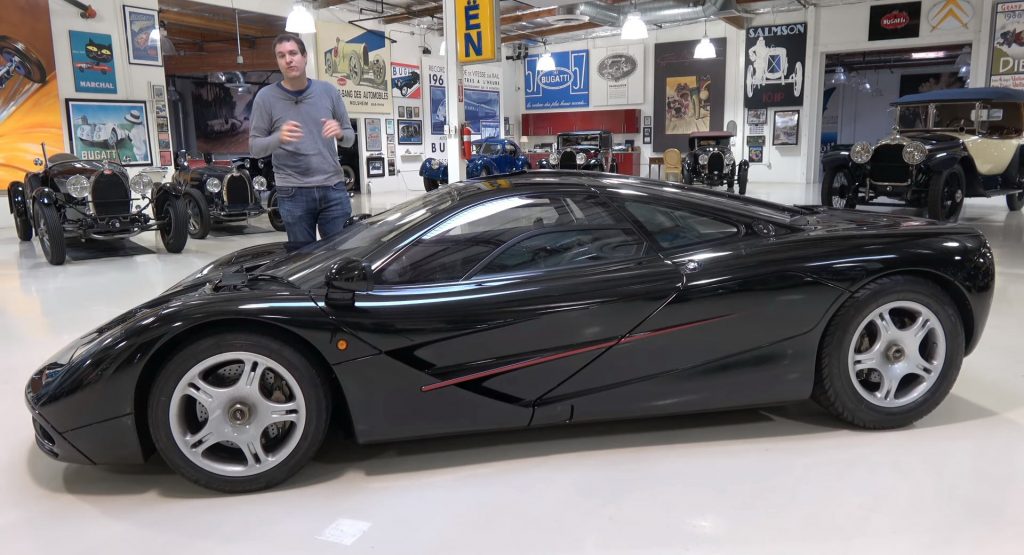The McLaren F1 really needs no introduction; when it comes to supercars, Woking’s first (and, for many, best) supercar is a timeless icon, something that is reflected on the insane price each example that goes up for sale commands.
Doug DeMuro visited Jay Leno and was granted access to perhaps the most famous of the McLaren F1’s road-legal examples (ed’s note: along with Rowan Atkinson’s), giving us a full tour in a near 40-minute-long video linked below.
The world first met the McLaren F1 on May 28, 1992. It was unlike any other supercar ever, or since, thanks to its central driving position and extreme attention to every detail.
Power comes from a BMW 6.1-liter naturally aspirated V12 with 627hp and 480lb-ft (651Nm) of torque that’s paired to a six-speed manual transmission. Combined with a curb weight of just 2,509lbs (1,138kg), the McLaren F1 came with a power-to-weight ratio of 550hp per tonne.
In 1998, the McLaren F1 officially became the world’s fastest car after achieving a two-way average of 240.1mph (386.4km/h) with Andy Wallace behind the wheel. It took a long time until the F1 was finally upstaged (by the Bugatti Veyron in 2005), but it is still one ferociously fast car.
The man behind the F1, then McLaren’s Formula 1 designer Gordon Murray, was so obsessed with making everything as lightweight as possible that he even got Kenwood to create a special CD changer that featured special magnetic pieces made out of aluminum to save a few more ounces. And no, there’s no radio included.
On the other hand, the F1 came with its own modem, so McLaren could diagnose any potential issues with customer cars straight from its headquarters in Woking, UK.
The list of this supercar’s unique features is too long to list here, so we suggest you sit back and enjoy watching every little detail of a supercar the world will never see again.




